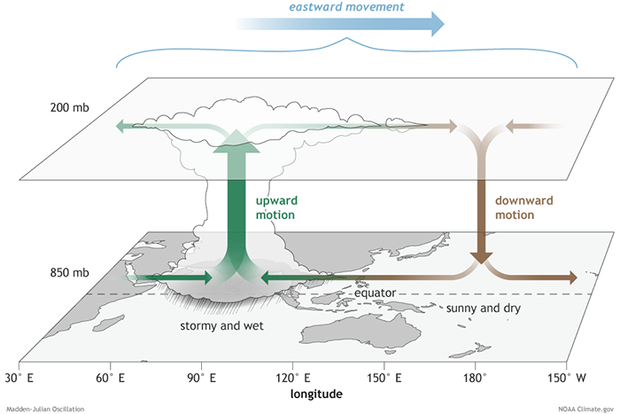New model improves subseasonal predictions

The Madden-Julian Oscillation (MJO) dominates subseasonal phenomena over the tropics. Credit: NOAA Climate.gov

The Madden-Julian Oscillation (MJO) dominates subseasonal phenomena over the tropics. Credit: NOAA Climate.gov
Prediction on weather and seasonal timescales has become routine, but the “subseasonal” time scale of a few weeks has proven difficult. The Madden-Julian oscillation (MJO), a large complex of tropical thunderstorms, is the dominant subseasonal phenomenon over the tropics, and its prediction is critical for subseasonal prediction of tropical cyclones, atmospheric rivers, and other extreme events.
GFDL has developed a new subseasonal prediction system using the GFDL Seamless System for Prediction and Earth-system Research (SPEAR), a global atmosphere-ocean-land-sea ice coupled climate model. In 20 years of wintertime reforecasts, this study found that the average prediction skill of the MJO was 30 days, placing it among the very best MJO prediction models in the world.
MJO events vary from event to event in their strength, life cycle, and propagation. The study showed that 4 distinct patterns of the MJO each have their own predictability. For the “fast-propagating” form, SPEAR is able to predict the MJO to 38 days. In contrast, the “standing” pattern is much more challenging, with predictability dropping to 23 days. SPEAR also accurately predicts the formation of new MJOs and the worldwide influence of each particular pattern on surface temperatures, crucial in using the MJO to predict extreme events. Forecasters can gain a better understanding of the MJO’s impacts by considering the MJO pattern, and potentially take advantage of certain patterns to issue extended range forecasts, in addition to the traditional indices.
Read more at the link below.